The Olympia Dakar is a new warm-weather adventure riding jacket for this season. After testing it extensively, I wanted to provide riders with an in-depth review of its features, fit, and performance.
This article will examine the Dakar’s style, construction, ventilation, protection, comfort, and value to help you decide if it’s the right jacket for your warm-weather adventures.
But, the main question I will answer in this Olympia Dakar 3 review will be: Is this the best mesh motorcycle jacket? Let’s find out!
Olympia Dakar 3
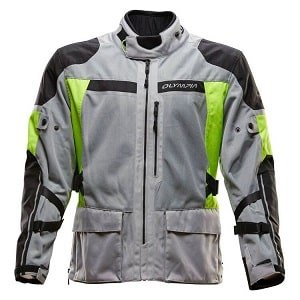
Key Takeaways
- Excellent value for the price
- Versatile 3-season protection
- Athletic contemporary styling
Our Olympia Dakar 3 Verdict
After extensively testing the Olympia Dakar 3, I’m thoroughly impressed with its versatility and functionality.
It has become my go-to choice for various riding conditions, from scorching summer days to chilly autumn mornings.
I really like the modular design of the Dakar 3. The removable thermal liner and separate rain jacket allow me to adapt quickly to changing weather conditions.
On hot days, I can strip it down to the mesh shell for excellent ventilation. When the clouds roll in, I can easily add the rain layer without missing a beat.
The CE Level 2 armor in the shoulders, elbows, and back gives me peace of mind without feeling bulky or restrictive.
Thanks to the adjustable features at the collar, cuffs, and waist, I’ve found the fit to be comfortable for long rides.
In my experience, the multiple pockets are a game-changer for organizations. I can easily distribute my gear without creating awkward bulges, and the improved waterproofing on the waist pockets keeps my valuables dry in unexpected showers.
After using the Dakar 3 for both daily commutes and weekend adventures, I’m convinced it’s a solid choice for riders who want a do-it-all jacket without breaking the bank. However, there are some drawbacks.
Potential Drawbacks to Consider
While I’m generally positive about the Dakar 3, there are a few potential drawbacks to keep in mind:
- Sizing inconsistencies: Some riders, myself included, have found that the sleeve length can be an issue. You might need to size up for proper arm coverage.
- Bulkiness with all layers: When using all the layers together, the jacket can feel a bit bulky. This might not be ideal for riders who prefer a sleeker profile.
- Limited color options: If you’re looking for bold colors or patterns, you might find the Dakar 3’s color range a bit limited.
- Pocket layout: While I appreciate the numerous pockets, some riders might prefer more internal storage options.
Remember, prices for the Olympia Dakar 3 jacket can change as special offers become available from Revzilla.com, so it’s worth checking out their best prices before buying elsewhere. Revzilla won’t be beaten on price with their price match guarantee, ensuring you get the best deal possible.
If you found this review helpful, please like and share the article. It helps Google know you like the page and allows more riders to discover this information. Your support is greatly appreciated!
Comparison To Other Models
| Model | Features |
|---|---|
| Sedici Federico 2 | Breathable mesh for summer, removable liner, CE Level 2 armor in elbows and shoulders, 1680D ballistic nylon overlays |
| FirstGear Kilimanjaro 2.0 | Waterproof and breathable, D3O armor, multiple vents, women-specific fit, reflective details |
| Joe Rocket Analog Jacket | Waterproof Rock Tex outer shell, removable insulated liner, CE-approved armor, adjustable waist belts |
The Olympia Dakar 3 offers the most versatility with its modular design, making it suitable for various weather conditions. It’s priced similarly to the FirstGear Kilimanjaro 2.0 but offers more features.
The Sedici Federico 2 is the most affordable option but lacks the waterproofing of the others. The Joe Rocket Analog falls in the middle price range and offers good waterproofing but may not be as ventilated as the mesh options.
Style and Design
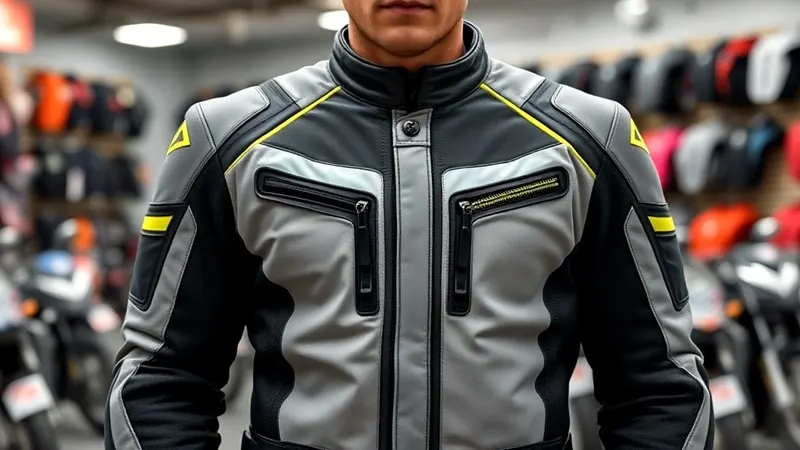
The most noticeable upgrade on the Dakar is its contemporary adventure style. Olympia gave this jacket a clean, crisp look compared to the boxy Moab.
The slimmer cut has an athletic fit while retaining the American sizing that provides room for layering. The Dakar looks right at home whether you’re riding trails or grabbing a bite in town after a long day.
It’s available in four color options:
- Ivory
- Patriot (red, white, and blue)
- Hi-Vis Yellow
- Fatigue Green
The minimalist color blocks and mix of materials give it an upscale appearance. Reflective piping adds visibility while complementing the overall aesthetics.
Construction and Materials
The Dakar uses a rugged 500 denier Cordura shell reinforced with SuperFabric panels on the elbows for extra abrasion resistance. 500D withstands the rigors of off-road riding while keeping it lightweight and promoting airflow.
Along with abrasion resistance, the materials also provide weather protection. It has a waterproof and breathable Aquatex liner that can be worn independently or zipped into the shell. When not in use, the liner stows in a zippered waterproof pocket at the rear.
For cold weather, a removable 80g Thermolite insulation liner adds warmth. The shell, waterproof liner, and insulation liner make this a true 3-season jacket.
Ventilation and Breathability
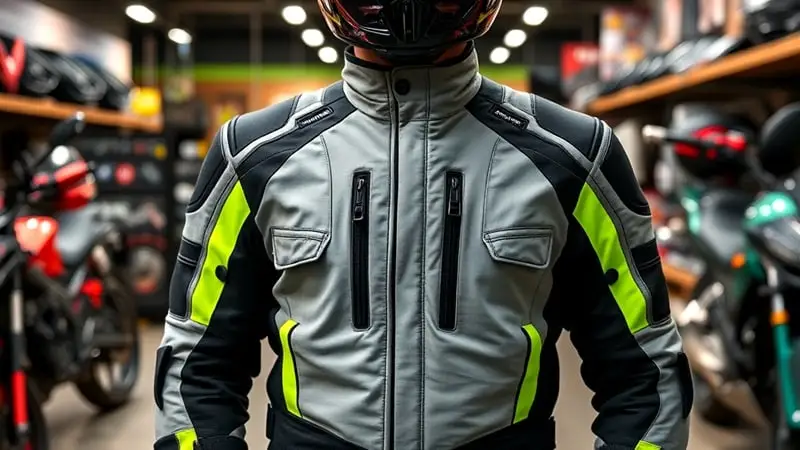
The Olympia Dakar 3 ventilation system is a game-changer for hot weather riding. I’ve put this jacket through its paces, and here’s what I’ve found:
Air Flow Management
The 500 and 1000 denier Cordura fabric construction strikes a balance between protection and breathability.
It features strategically placed vents that allow air to flow freely, keeping you cool even on scorching days. The mesh construction in key areas promotes maximum airflow, which is crucial for maintaining comfort during long rides in high temperatures.
Temperature Control
In warm weather, the Dakar 3 excels at managing body temperature. The ventilation system effectively circulates air, wicking away sweat and preventing that sticky, uncomfortable feeling we all dread. I’ve found that even in stop-and-go traffic, it maintains a comfortable internal climate.
Thermal Versatility
For colder rides, the Dakar 3 doesn’t leave you out in the cold. It comes with a removable 350g insulated thermal layer.
This feature transforms it from a summer-friendly piece to a year-round riding companion. You can wear this layer under the main shell or even under the separate rain jacket for extra warmth and versatility.
Potential Drawbacks
While the ventilation system is generally effective, some riders on forums have mentioned that airflow could be improved in certain areas, particularly under the arms. It’s worth noting that individual experiences may vary based on riding style and body type.
The Dakar 3’s ventilation system isn’t just about comfort—it’s a safety feature, too. Proper temperature management.
Studies have shown that motorcycle protective clothing can significantly reduce injury severity in crashes, and the Dakar 3’s design seems to balance protection with comfort effectively.
In my experience, the Olympia Dakar 3 offers a well-thought-out ventilation system that caters to various riding conditions. It’s not perfect, but it’s a solid performer that’ll keep you comfortable on most of your rides.
Weatherproofing and Insulation
The Olympia Dakar 3 is a versatile piece of gear that’s designed to handle a wide range of weather conditions. I’ve put it through its paces, and here’s what I’ve found:
All-Weather Performance
It is built to tackle whatever Mother Nature throws at you. It comes with a separate waterproof rain jacket that can be worn either inside or outside the main jacket.
This flexibility is a game-changer. On those days when the weather can’t make up its mind, you can quickly adapt without having to carry extra gear.
The rain jacket isn’t just an afterthought – it’s a sturdy, waterproof outer shell made of nylon that comes in bright, visible colors.
This means you’re not only staying dry but also increasing your visibility on the road during wet conditions. It’s a win-win for comfort and safety.
Temperature Regulation
For those chilly rides, the Dakar 3 has got you covered. It features a removable quilted liner with Insulex insulation.
This layer is designed to trap warmth close to your body, keeping you cozy even when the temperature drops.
What’s great about this system is its modularity. You can wear the insulation layer under the main shell or even under the rain jacket for extra warmth. This means you can fine-tune your comfort level based on the conditions you’re riding in.
Breathability
While it excels at keeping you warm and dry, it doesn’t neglect breathability. The main outer shell is mostly mesh, which allows for excellent airflow when you don’t need the rain or insulation layers.
This mesh construction helps prevent that clammy, overheated feeling you can get with less breathable jackets.
Potential Drawbacks
While the Dakar 3 is generally well-received, I’ve seen some riders in forums mention that finding the right fit can be tricky.
Some have found the sleeves too long, while others have had issues with the overall sizing. It’s worth noting that fit can be a personal issue, and what works for one rider might not work for another.
The Dakar 3’s approach to weatherproofing and insulation is grounded in sound principles of thermal regulation.
The layering system allows you to adapt to changing conditions, which is crucial for maintaining comfort and focus while riding.
Studies have shown that maintaining a comfortable body temperature can significantly impact a rider’s alertness and reaction times.
In my experience, the Olympia Dakar 3 offers a well-thought-out system for dealing with various weather conditions.
It’s not just about staying dry or warm – it’s about giving you the flexibility to stay comfortable no matter what the weather decides to do. And in the unpredictable world of motorcycle riding, that kind of adaptability is invaluable.
Sizing
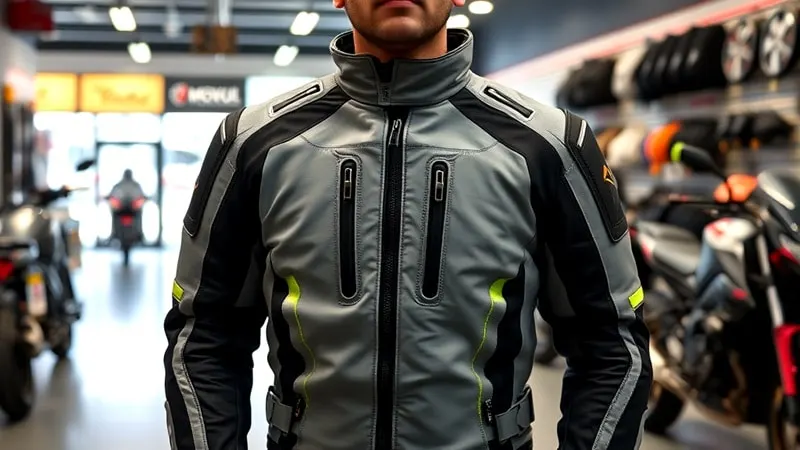
Getting the right fit is crucial for comfort and safety when it comes to motorcycle gear. Here’s what I’ve found about sizing for the Olympia Dakar 3:
Size Chart
| Size | Suit Size | Height | Weight |
|---|---|---|---|
| S | 34 – 36 | 5’3″ – 5’9″ | 125 – 155 lbs |
| M | 38 – 40 | 5’3″ – 5’10” | 155 – 175 lbs |
| L | 42 – 44 | 5’6″ – 6’1″ | 175 – 195 lbs |
| XL | 46 – 48 | 5’8″ – 6’2″ | 195 – 215 lbs |
| 2XL | 50 – 52 | 5’9″ – 6’3″ | 215 – 235 lbs |
| 3XL | 54 – 56 | 5’11” – 6’4″ | 235 – 255 lbs |
| 4XL | 58 – 60 | 6′ – 6’5″ | 255 – 290 lbs |
Fit Adjustability
The Dakar 3 comes with several features that allow for a customized fit:
- Custom fit detailing at collar, cuffs, forearms, and waist
- Comfort neoprene framed collar
- Velcro straps for size adjustment
These adjustable elements mean you can fine-tune the fit to your body type and riding position.
Real-World Fit Experience
While the size chart is a good starting point, real-world experiences can vary:
- Some riders have found that they needed to size up for proper sleeve length
- The level of adjustability has been praised as impressive
Potential Sizing Issues
It’s worth noting that some riders have experienced sizing inconsistencies:
- One rider mentioned having to go up to XL for proper sleeve length, even though the size chart indicated a Large would fit
Fit Considerations
When choosing your size, consider:
- Your riding position: More upright or leaned forward?
- Layering: Will you be wearing thick layers underneath?
- Personal preference: Do you prefer a snug fit or a looser one?
The Dakar 3’s modular design, with its removable thermal liner and separate rain jacket, adds another dimension to sizing considerations. You’ll want to ensure a comfortable fit with all layers in place.
In my experience, it’s best to try it on if possible or carefully measure yourself against the size chart. The Dakar 3’s adjustability features can help fine-tune the fit, but starting with the right size is key.
Remember, a well-fitting jacket isn’t just about comfort – it’s about safety, too. Properly positioned armor and a snug fit can make a significant difference in crash protection.
The Dakar 3’s sizing options and adjustability features aim to provide that crucial balance of comfort and safety for a wide range of riders.
Armor and Protection
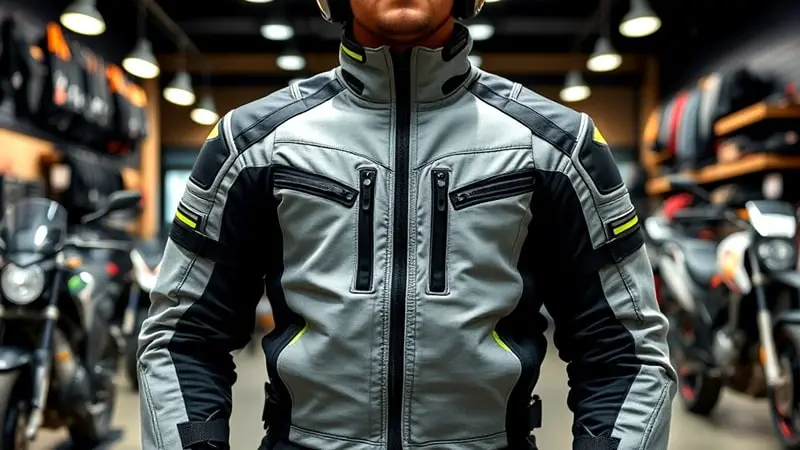
The Olympia Dakar 3 doesn’t mess around when it comes to keeping you safe. I’ve examined its protective features, and here’s what I’ve found:
Armor Type and Location
It comes equipped with Powertector CE Level 2 armor in critical impact zones. You’ll find this high-grade protection in the shoulders, elbows, and back.
What’s great about this armor is that it’s not just protective—it’s comfortable, too. The improved design means you can ride for hours without feeling like you’re wearing a suit of medieval armor.
Additional Protection Features
Beyond the armor, the Dakar 3 is constructed with a combination of 500 and 1000 denier Cordura fabric.
This tough-as-nails material offers excellent abrasion resistance, which is crucial if you ever find yourself sliding across the pavement. It also features reinforced seams, adding an extra layer of durability where it counts.
Safety Standards and Certifications
While I couldn’t find specific information about certifications for this jacket, the inclusion of CE Level 2 armor is a good indicator of its safety standards.
CE Level 2 is the higher of two levels in the European standard for motorcycle armor, meaning it offers superior impact absorption compared to Level 1.
Crash Performance
In a crash scenario, the Dakar 3’s combination of high-denier Cordura and CE Level 2 armor should provide substantial protection.
The abrasion-resistant fabric helps prevent road rash, while the armor absorbs and disperses impact forces. This can mean the difference between walking away from a spill and a trip to the hospital.
It’s worth noting that while no jacket can guarantee 100% safety, the Dakar 3’s protective features align with what safety experts recommend for motorcycle gear.
Studies have shown that proper motorcycle clothing can significantly reduce the risk of injury in crashes.
One potential drawback I’ve seen mentioned in forums is that some riders initially find the back protector a bit stiff. However, most report that it breaks in over time and becomes more comfortable.
Remember, the best armor is the armor you’re wearing. The Dakar 3’s combination of protection and comfort means you’re more likely to wear it consistently, which is key to staying safe on the road.
Storage and Pockets
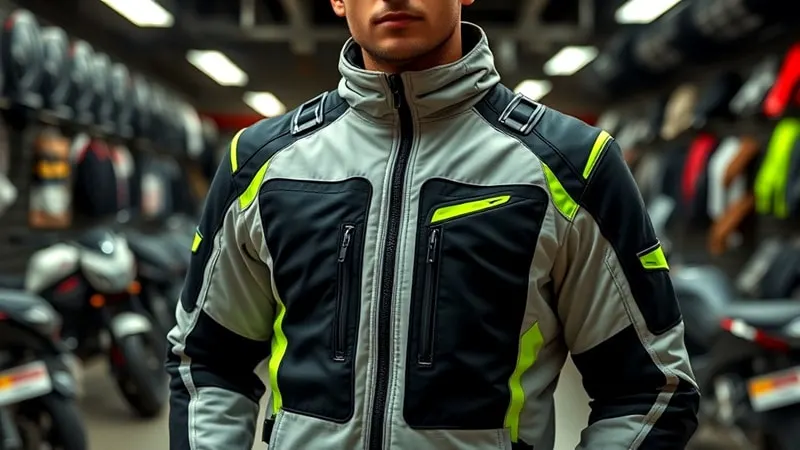
The Olympia Dakar 3 doesn’t skimp on storage options. I’ve explored every nook and cranny of this jacket, and here’s what I’ve found:
Pocket Count and Types
It boasts an impressive array of pockets:
- Six external storage pockets
- One interior cell phone pocket
The external pockets are a mix of zippered and Velcro-secured options, giving you flexibility in how you store your items. The interior cell phone pocket is a nice touch, keeping your device close and protected.
Storage Capacity and Convenience
The multiple external pockets allow you to distribute your gear evenly, which is crucial for maintaining balance while riding.
You can easily store your wallet, keys, and small tools without creating bulky spots that might affect your aerodynamics.
I’m particularly impressed with the waist pockets. They’ve been upgraded from previous models with better waterproofing.
The outside pocket now has a fabric cover and features both a Velcro closure and a zipper. This dual-closure system gives you peace of mind that your items are secure, even in heavy rain.
The interior cell phone pocket is a game-changer. It keeps your phone easily accessible but protected from the elements. No more fumbling with external pockets when you need to check your navigation app.
Practical Benefits
The thoughtful pocket design of the Dakar 3 translates into real-world benefits:
- Quick access to essentials: The variety of pocket types means you can organize your gear for easy retrieval.
- Weather protection: The improved waterproofing on the waist pockets keeps your valuables dry in unexpected downpours.
- Balanced load distribution: Multiple pockets allow you to spread out your gear, maintaining your center of gravity while riding.
Potential Drawbacks
While the pocket layout is generally well-received, I’ve seen some riders in forums mention that they’d prefer more internal pockets. Some also noted that the cell phone pocket might be a tight fit for larger smartphones.
The Dakar 3’s pocket design aligns with ergonomic principles that emphasize accessibility and balance. Studies have shown that proper weight distribution in motorcycle gear can reduce rider fatigue and improve overall comfort during long rides.
In my experience, the Olympia Dakar 3 offers a well-thought-out storage system that caters to the practical needs of most riders.
Whether you’re commuting or embarking on a long-distance tour, it’s got the pockets to keep your essentials organized and within reach.
Who Is It For?
The Olympia Dakar 3 is a versatile piece of gear that caters to a wide range of riders. Here’s my take on who’ll get the most out of this jacket:
All-Season Riders
If you’re the type who doesn’t let the weather dictate your riding schedule, this jacket’s for you. The Dakar 3’s modular design, with its removable thermal liner and separate rain jacket, means you can adapt to changing conditions on the fly.
You’ll be comfortable whether you’re cruising under the summer sun or braving a chilly autumn morning.
Adventure Enthusiasts
The name “Dakar” isn’t just for show. It is built for riders who love to venture off the beaten path. Its tough Cordura construction and CE Level 2 armor make it ideal for those unpredictable moments that come with adventure riding.
Value-Conscious Riders
At its price point, the Dakar 3 offers a lot of bang for your buck. You’re essentially getting three jackets in one – a mesh summer jacket, a waterproof rain jacket, and a warm winter jacket when you add the thermal liner. For riders who want versatility without breaking the bank, this is a solid choice.
Commuters and Tourers
There is ample storage options make it perfect for both daily commutes and long-distance tours. You can easily stow away your essentials without compromising on comfort or style.
Riders of All Ages
While motorcycle ownership trends show varying demographics, the Dakar 3’s adaptability makes it suitable for riders across age groups.
According to recent statistics, about 16% of 18-29-year-olds in the U.S. own a motorcycle, but it features cater to both younger riders and 48% of UK riders who are over 60.
Potential Drawbacks
It’s worth noting that some riders have found the sizing a bit tricky. If you’re between sizes or prefer a snug fit, you might want to try it on before buying or check the sizing chart carefully.
In my experience, the Olympia Dakar 3 is a jack-of-all-trades that’ll serve most riders well. Whether you’re a weekend warrior or a daily commuter, this jacket’s got you covered.
It’s not just about who can wear it – it’s about who wants a single jacket that can handle multiple riding scenarios without compromise.
Comfort and Convenience
Several design features enhance the comfort and functionality of the Dakar:
- Neoprene collar lining prevents chafing at the neck
- Hook and loop waist adjusters customize the fit
- Gusseted side panels add flexibility
- A two-way front zipper permits easier access while seated
- Zipper garages at the collar and pockets prevent irritation from zipper hardware
- Soft tricot lining has moisture-wicking properties
Small touches like these noticeably improve the wearing experience during long days of adventure riding.
Weather Protection
The waterproof and insulating liners turn the Dakar into a true 3-season jacket. But how does the shell itself stand up to wet weather?
I rode through several downpours and found it provides decent water resistance. Light rain beads up and runs off, while heavier rain will eventually seep through.
Using the waterproof liner is recommended for stormy rides, but the shell delivers better rain protection than a mesh-only jacket.
Cost and Value
The Olympia Dakar hits a pleasing price point for a fully-featured 3-season jacket with a premium look and feel. The quality rivals more expensive counterparts from other brands.
The Dakar delivers outstanding value due to the versatile weather protection, robust construction, and well-designed feature set. The price belies the technical components and sophistication of this jacket.
How Does It Compare To Other Olympia Jackets?
The Dakar fits into Olympia’s lineup as a replacement for the venerable Moab:
- Renegade: Lower-priced warm weather mesh jacket. Good for hot riding.
- Dakar: Mid-range seasonal jacket. Versatile 3-season protection.
- Ranger: Premium 4-season jacket with more weatherproofing. Colder weather focused.
- MotoQuest: Top-of-the-line tech-loaded 4-season touring jacket.
The Dakar hits the sweet spot between lightweight mesh and hardcore adventure riding jackets. It bridges the gap with the right balance of ventilation, weather protection, and convenience.
Pros and Cons
Based on my testing, here are the standout pros and cons of the Olympia Daka:
Pros:
- Airflow-focused construction
- Lightweight and flexible
- Athletic contemporary styling
- Good armor protection
- Abrasion-resistant shell
- Removable insulating liner
- Excellent value for the price
Cons:
- Shell is not completely waterproof
- Back armor could be more robust
- Sleeve cuffs lack adjustment
- Insulating liner attaches at sides rather than sleeves
My Key Takeaways
Ordering the right size was crucial – I’m 6’2″ and 205 lbs, but based on advice that Olympia runs large, I opted for a size large instead of my usual XL.
This turned out to be the right call, as the large fits me nearly perfectly, with just slightly short sleeves.
Overall, I’m very impressed with the Dakar 3. It’s comfortable, seems durable, and has useful features like a removable liner and rain shell.
Ventilation is excellent for warm-weather riding. My only complaint is that the thermal liner has a mesh panel on the back instead of insulation, but I can use my old liner to solve that issue.
For the price, it’s tough to beat the combination of protection, convenience, and comfort the Dakar 3 provides.
I would definitely recommend it to fellow riders looking for a 3-season jacket that can handle a wide range of conditions without breaking the bank.
After comparing it to pricier models, the Dakar 3 won me over with its great quality and value.
Conclusion and Recommendation
The Olympia Dakar is an impressively well-rounded, warm-weather adventure riding jacket. It lacks any major weaknesses and provides an ideal balance of ventilation, weather protection, comfort, and casual style.
Riders seeking a lightweight jacket that can span multiple seasons will find that Dakar fits the bill beautifully. It handles everything from hot summer rides to cooler fall temps while looking at home both on and off the bike.
For all-around performance and value, the Olympia Dakar should top your list of riding jackets to handle warmer weather adventures. It replaces the venerable Moab while setting a new benchmark in its category.
Frequently Asked Questions
Here are answers to some common questions about the Olympia Dakar:
Q: Is the Dakar fully waterproof?**
A: The shell itself resists light rain but is not waterproof. For heavy rain, use the included waterproof liner.
Q: Does it have a removable thermal liner?**
A: Yes, it has a detachable 80g Thermolite insulation liner.
Q: How many seasons can you wear the Dakar?**
A: It’s designed for spring, summer, and fall riding. With the liners, it works in mild to cold weather.
Q: What kind of warranty does it come with?**
A: Olympia offers a limited lifetime warranty against defects in materials and workmanship.
Q: Does it have pockets for armor upgrades?**
A: Yes, it has pockets for upgrading the shoulder and elbow armor to CE Level 2.
Q: Is the sizing runs small?**
A: No, it fits true to size with an American cut suitable for athletic builds. Size up if you have a bigger belly or chest.
Q: Can a hydration bladder be added?**
A: No, there are no direct hooks or routing for a hydration bladder. Water would have to be carried in the pocket space.
Q: What are the shells and liners made from?**
A: 500D Cordura for the shell. The waterproof layer is Aquatex. Insulation is Thermolite.
Previous Article: Merlin Shenstone Air D3O Review
Next Article: Olympia Airglide 6 Review
Recent Posts
Ultimate Track Hand Protection? Continue Reading
Icon Hooligan Facelift Gloves Review: Best for Urban Sport Riding?
Icon Hooligan Facelift Continue Reading

